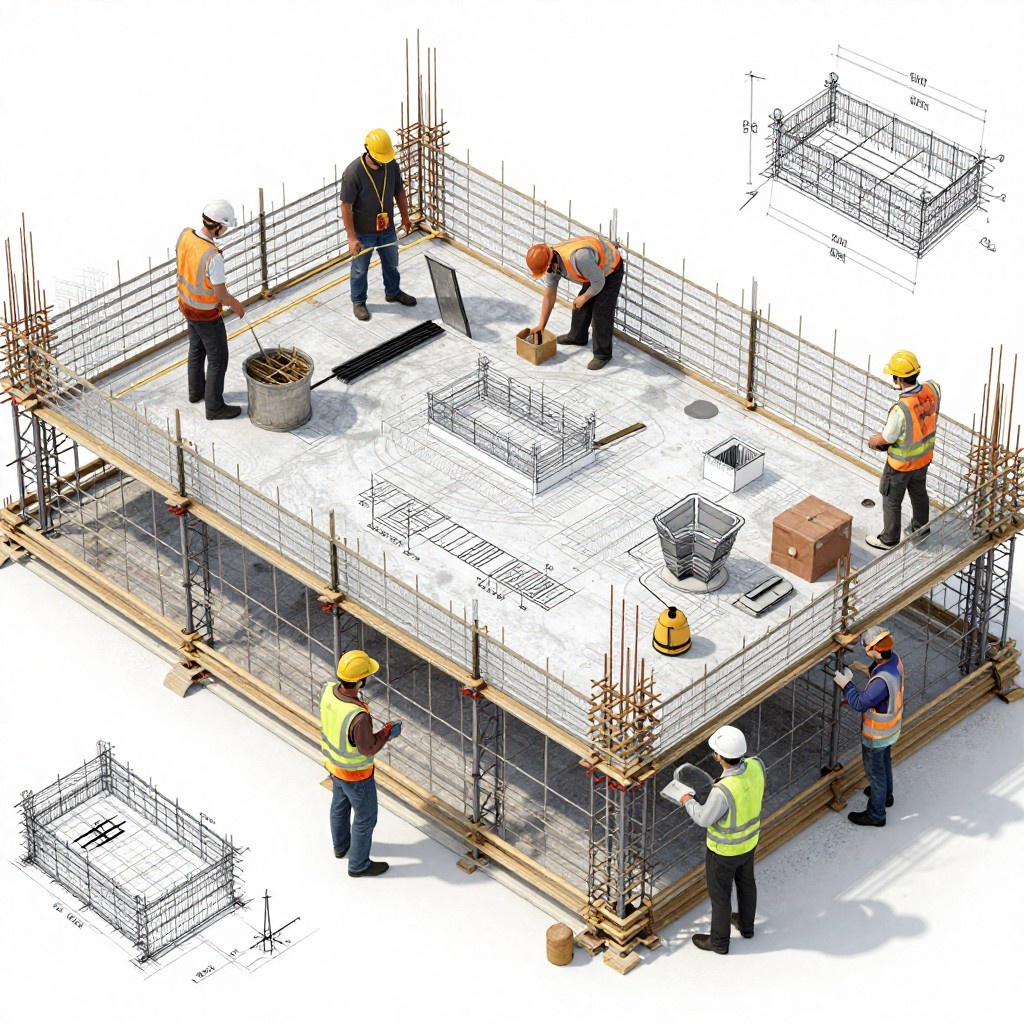Discover how construction automation enhances efficiency, reduces costs, and improves satisfaction with robotics, AI, and advanced technologies.
As of now, most companies, specifically manufacturing, automotive, electronics, and healthcare industries, have incorporated automation to work on projects, maximise efficiency and minimise the possibilities of human errors. The construction industry is going down the same road. But how does it benefit construction? What are the uses of automation in construction?
Automation handles repetitive and tedious tasks that otherwise may stress employees and decrease their effectiveness due to uninteresting and monotonous work. Scroll down to get some idea about how automation can enhance the overall project management and timeline, along with some other facilities.
What is Construction Automation?
When people hear "automation," they often think of robots taking over jobs, but it's more complex than that. In construction, automation is more about boosting productivity than cutting jobs. It can provide solutions concerning new infrastructures and affordable housing all around the world by increasing the efficiency of the industry.
The key is to prepare for this shift by developing new skills for the current and future workforce. Automation can enhance safety by handling dangerous tasks, improving precision in repetitive work, speeding up project completion, and providing valuable data from automated inspections for early corrective actions.
Construction Automation Use Cases
Automation and technology in construction are moving fast. Automation enhances connectivity and safety on construction sites. It enables seamless collaboration between humans and robots. Take a look at some practical instances:
- Robots are now capable of construction tasks such as brick-laying, digging to a certain depth, constructing roads, fixing wall panels, and handling pipes.

- Drones remain in safety checks, assessing site conditions and the presence of risks or complications, such as leakage, crack, or deviation from the intended plan.

- Self-driving vehicles efficiently transport materials; meanwhile, green technologies are critical components of current construction practices.
- AI and machine learning provide forecasts of project requirements; therefore, 3D printing accelerates the construction of larger, intricate buildings.
- Virtual and augmented reality streamline project design; meanwhile, blockchain contributes to transparent supply chains.
Benefits of Construction Automation
- A Streamlined Bidding Process
Automation assists by notifying all the stakeholders—estimators and leaders included—immediately that new bid invitations have arrived. This accelerates the rate at which bids can be evaluated and decisions made without having to launch a bid search by a person. Moreover, automation helps enhance the optimisation of future bids since it draws from past performance.

- Increased Productivity
Right now, with the pandemic still affecting things, construction work is often interrupted because of the lack of appropriately skilled labor. To address this, it has now become common for many firms to implement sophisticated project management systems.
These solutions allow for the automatic distribution and scheduling of tasks and follow-ups so that it is easier to monitor progress and communicate with other team members.
They assist in facilitating interaction among team members, whether they are working in an office environment or from a distance, and this can be done without necessarily having to schedule numerous meetings. Moreover, they use project data to identify issues with capacity constraints and resource utilisation and to make better decisions for future projects.
- Improved Employee Satisfaction
Construction is gradually being subjected to automation; however, the industry will always need people. Therefore, employee satisfaction is a necessity. Instead of engaging in traditional and time-consuming methods, workers prefer modern methods because they make them feel accomplished and safe.
For instance, software-based solutions like document management platforms eliminate repetitive tasks like manual data entry and filing, thus improving the efficiency of accounting departments. An automated invoice process keeps errors in check, ensures efficient and effective payments, and fosters team and external partner cooperation.
- Reduced Costs
Despite higher demand, input costs such as raw material costs, labour shortages, and supply chain constraints are on the rise. Automation enhances project completion efficiency, decreases plan flaws, and saves money. Robots handle tasks overnight, reducing the need for constant supervision. It is a cost-effective idea in the long run, although it has some cost implications at the start.

- Improved Client Experience
Quicker responses, automatic project updates, and faster payment processing make the client experience smoother. Constant communication regarding the project's progress gives clients more confidence in your construction company. Automating text reminders and updates keeps clients in the loop, making them feel more involved and making your partnership more successful.
The Future of Construction Automation
Specifically in the future, there will be massive transformations within the construction domain. From laying bricks to assembling huge frameworks, robots will be precise, fast and will address all these aspects separately.
On the other hand, self-driving cars and trucks will immeasurably facilitate the automation of transport or shuttling of materials, as green technology will form the basis of construction.
Moreover, AI and machine learning techniques will aid in designing things like when this project should take place and what is required for it. Hence, 3D printing will create larger and grander structures, speeding up construction.
Virtual and augmented reality will make designing and visualising projects easier. Blockchain will manage the supply chain to become free from any hindrance. As cities get smarter, all this automation will help connect everything better, with people and robots working together safely on construction sites.
Technology systems can enhance talent acquisition for construction companies.
Technology systems for construction employees could also improve talent acquisition. Using new technology in construction appeals to young people, including Millennials and Gen Z.
Thus, e-Builder is ready to work with progressive builders.
E-Builder is prepared to collaborate with forward-thinking builders.
Automation not only helps with labour shortages but also makes job sites safer and more efficient. Construction companies can leverage systems such as e-Builder Enterprise to manage projects automatically, work with less waste of time, and predict potential problems; this way, the human factor can help appreciate technology.
How Will Automation Affect Construction Wages?
The lack of qualified labour in the construction industry is a bottleneck that slows down the process while also leading to budget overruns and project constraints. Automation offers a promising solution by streamlining repetitive, time-consuming, and hazardous tasks, improving efficiency and worker safety.
This shift could also lead to higher wages for skilled workers over time, while those in less specialised roles may experience slower wage growth. However, automating construction jobs, which are typically in the middle-wage range and not easily automated, may help balance job opportunities amid broader economic shifts.
FAQs:
What technologies drive construction automation?
Technologies like IoT (Internet of Things), AI (Artificial Intelligence), robotics, 3D printing, virtual and augmented reality, and blockchain are getting popular and driving construction automation. These technologies enhance efficiency, precision, and connectivity in construction projects.
What's the role of robotics in construction?
Robotics in construction handle tasks like bricklaying, welding, and assembling structures with greater precision and speed. Robots improve efficiency, reduce human error, and enhance overall safety on construction sites.
How does automation impact site safety?
Automation improves site safety by performing dangerous tasks, reducing human error, and providing real-time monitoring. Automated systems can predict potential hazards, ensure compliance with safety protocols, and quickly respond to emergencies.
What are the benefits of using BIM?
BIM offers numerous benefits for the construction industry, like -
- Improves collaboration
- Enables better project visualisation
- Enhanced accuracy in planning and design
- Reduces errors and rework, saving time and costs
- Last but not the least, it provides a comprehensive understanding of the building's lifecycle




